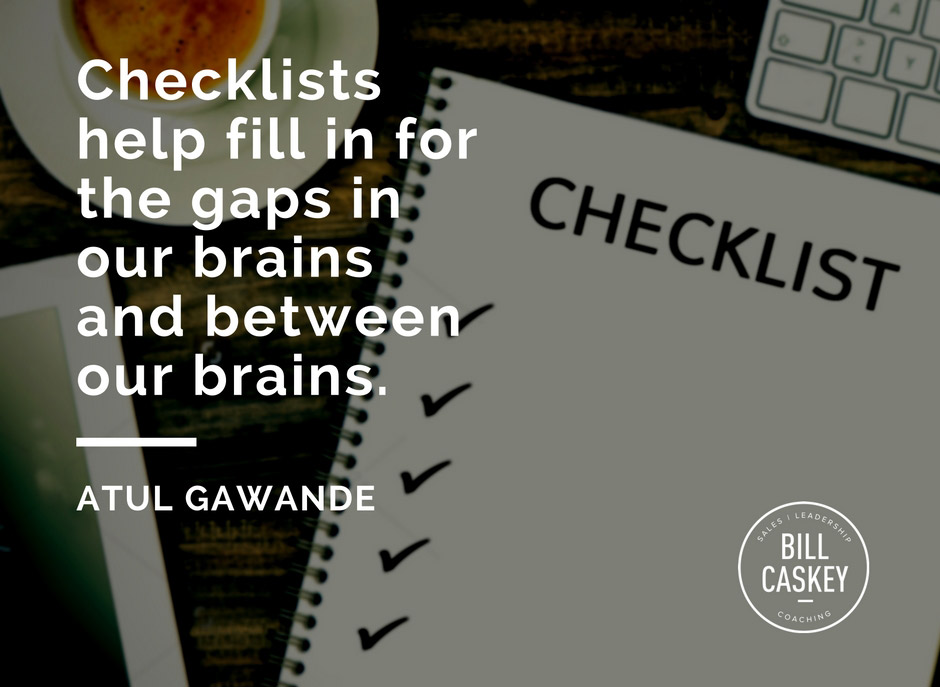This is the final in a series of seven articles on how to change the dynamic between you and your buyer and the need for NEW RULES in your selling process. In today’s article, we’ll look at the “Dynamic of Checklist Thinking, a super-strategy to execute the sales process.”
Does the name Atul Gawande ring a bell? It should.
He’s become a great thinker on the power of checklists. Yes, everyone must be known for something. And that’s his fame.
You see Atul isn’t merely an author, The Checklist Manifesto, he is also a surgeon at Brigham and Women’s Hospital in Boston. “Manifesto” was written as a wake-up call to the medical community about the power of checklists to save lives in hospitals. The fact is that more than 200,000 people die in hospitals from preventable causes. (The Journal of Patient Safety, Sept, 2013)
You never thought checklists could be that important, did you? Me neither. But they are. And they can also be a life-saver for you, pun intended.
In your business – the business of acquiring clients – ‘checklist thinking’ is a super-strategy that can help you be successful. (I define “super-strategy” as any strategy that can be used across the many disciplines of your business.)
How it Works
This strategy can be applied to virtually everything you do, but we’ll focus on the customer acquisition area of your business.
Here are the four checklists you must have – with a brief descriptor after each.
1. First Call Checklist.
In most sales, there is a beginning. Whether it’s phone call or a web conference, you should have a checklist of the items you need to cover on that first call. Obviously, you don’t want to interrogate the customer by having a laundry list of questions, so make sure you combine the questions you need to ask with the items you want to share with him. How you do business. How you look at sales. What your philosophy is when searching for new clients.
2. Face-to-Face Checklist.
This is similar to the first one. Have a list of the items you typically want to cover in the first meeting. You can turn it into an agenda that you send to the prospect, but at the very least, have it for yourself. One thing I find sellers forget is the “process” they take the client through in determining the fit.
3. Prospect Checklist.
You want to have the items that you need to hear from them in order to classify them as a true prospect. Some of these items might include: Do they have the right pain that you can remedy? Do they have budget set aside? Have you been able to get to the right people in the process? Is there an assessment that must be done to help them see the value of your offer?
4. Client Retention Checklist.
In a world where so much attention goes to ‘new logos,’ I believe lost in this is the opportunity that exists with your current clients – either for more business, or for referrals to other companies. You must have a list for current clients. On this list could be things like: an overview of current purchases, a preview of upcoming products, a tutorial on the other products available. Remember the worn-out but true axiom: It’s easier (and cheaper) to sell a current client than a new one.
If you create these checklists and have them prominent in your business, you’ll find your effectiveness will soar. It sounds too simple, doesn’t it? Yet, I see sales people everyday who have no plan for where they want to go – and they don’t get there. Checklists will help.
Is It Time You Changed Your Dynamics?
If you’d like to change your approach by implementing the Dynamic of The Checklist, then click the button below. It’s called The New Rules of Selling and is a course I designed for sales pros who are tired of the old way of operating and want modern strategies to grow their business and income.


